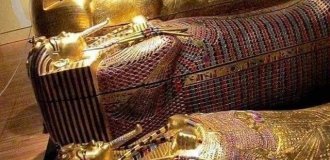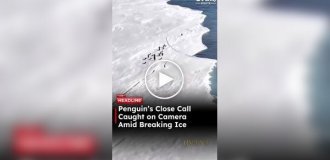Platform country Sealand (24 photos)
This is not just a platform, it is a whole principality!
We look at the photos and read.

The physical territory of Sealand emerged during the Second World War. In 1942, the British Navy built a series of platforms on the approaches to the coast. One of them was Roughs Tower (literally “hooligan tower”). During the war, anti-aircraft guns were stationed there and a garrison of 200 people was located there. After the end of hostilities, most of the towers were destroyed, but the Rafs Tower, being outside British territorial waters, remained untouched. In 1966, retired British Army Major Paddy Roy Bates chose this location to base his pirate radio station, Britain's Better Music Station. To avoid prosecution by the British authorities, Bates declared the platform a sovereign state and proclaimed himself Prince Roy I. The proclamation of Sealand took place on September 2, 1967. This day is celebrated as a major public holiday.

In 1968, the British authorities tried to occupy the young state. Patrol boats approached the platform, and the princely family responded by firing warning shots into the air. The matter did not come to bloodshed, but a trial was launched against Prince Roy as a British citizen. On September 2, 1968, an Essex judge made a historic ruling: he found that the case was outside British jurisdiction.

In 1972, Sealand began minting coins. In 1975, Sealand's first constitution came into force. A flag and coat of arms appeared.

In August 1978, a putsch occurred in the country. It was preceded by tension between the prince and his closest ally, the country's prime minister, Count Alexander Gottfried Achenbach. The parties differed in their views on attracting foreign investment to the country and accused each other of unconstitutional intentions. Taking advantage of the absence of the prince, who was negotiating with investors in Austria, Achenbach and a group of Dutch citizens landed on the island. The invaders locked young Prince Michael in a basement and then took him to the Netherlands. But Michael escaped from captivity and met his father. With the support of the country's loyal citizens, the overthrown monarchs managed to defeat the usurpers' troops and return to power.

The government acted in strict accordance with international law. The captured foreign mercenaries were soon released, as the Geneva Convention on the Rights of Prisoners of War requires the release of prisoners after the end of hostilities. The organizer of the coup was removed from all posts and convicted of high treason in accordance with Sealand laws, but he had a second - German - citizenship, so the German authorities became interested in his fate. The British Foreign Office refused to intervene in this matter, and German diplomats had to negotiate directly with Sealand. The senior legal adviser of the German embassy in London, Dr. Niemuller, arrived on the island. Prince Roy demanded diplomatic recognition of Sealand, but in the end, given the bloodless nature of the failed putsch, he agreed to verbal assurances and generously released Achenbach.

The losers continued to insist on their rights. They formed the illegal government of Sealand in exile (FRG). Achenbach claimed to be the chairman of the Privy Council. In January 1989, he was arrested by the German authorities (who, of course, did not recognize his diplomatic status) and handed over his post to Minister for Economic Cooperation Johannes W. F. Seiger, who soon became prime minister. Re-elected in 1994 and 1999

On September 30, 1987, Sealand announced the expansion of its territorial waters from 3 to 12 miles. The next day, the UK made a similar statement. Thus, according to international norms, the maritime territory between the two countries should be divided equally. The lack of a bilateral agreement regulating this issue has caused dangerous incidents. So in 1990, Sealand fired warning salvoes at a British ship that had approached its shore unauthorized.

Unbeknownst to the government, Sealand's name was embroiled in a massive criminal scam. In 1997, Interpol came to the attention of an extensive international syndicate that had established trade in fake Sealand passports (Sealand itself never traded passports and did not provide political asylum). More than 150 thousand fake passports (including diplomatic ones), as well as driver's licenses, university diplomas and other fake documents were sold to citizens of Hong Kong (during its transfer to Chinese control) and Eastern Europe. In several European countries, attempts were recorded to open bank accounts and even purchase weapons using Sealand passports. The attackers' headquarters were in Germany, and their area of activity covered Spain, Great Britain, France, Slovenia, Romania and Russia. The “Minister of Foreign Affairs” of the pseudo-state was Russian citizen Igor Popov. In the United States, a connection was discovered between this case and the murder of Gianni Versace (the killer committed suicide on a yacht whose owner had a fake Sealand diplomatic passport). The Sealand government fully cooperated with the investigation and canceled the passports following this tragic incident.

In 2000, the HavenCo company hosted its hosting in Sealand, in return the government pledged to guarantee the inviolability of freedom of information legislation (everything is allowed on the Internet in Sealand, except spam, hacking attacks and child pornography). HavenCo hopes that its location on sovereign territory will save it from the restrictions of British internet laws.

Sealand's position compares favorably with that of other artificially created states. The Principality has a physical territory and has some legal grounds for international recognition. The requirement for independence is based on three arguments. The most fundamental of these is the fact that Sealand was founded in international waters before the 1982 UN Convention on the Law of the Sea, which prohibits the construction of man-made structures on the high seas, came into force, and before the expansion of the UK's sovereign maritime zone from 3 to 12 miles in 1987. Due to the fact that Rafs Tower was abandoned and struck off the British Admiralty lists, its occupation in 1966 is considered to be colonization. The settlers who settled there had every right to establish a state and establish a form of government at their discretion. Sealand meets all the criteria for statehood specified in the Montevideo Convention on the Rights and Duties of States. According to international standards, the size of a state cannot be an obstacle to recognition. For example, the recognized British possession of Pitcairn Island has only about 60 people.

The second important argument is the 1968 British court decision that the UK had no jurisdiction over Sealand. No other country has claimed rights to Sealand either.



































